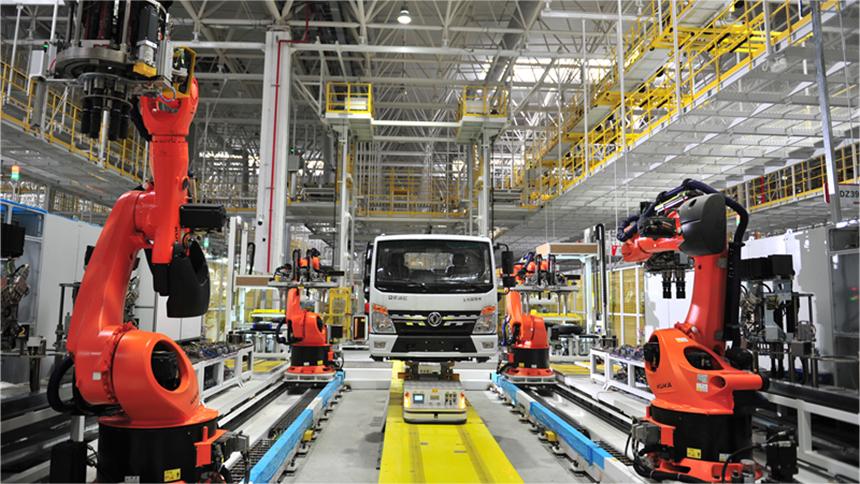Low-altitude economy poised for takeoff

XPeng Aeroht's flying car, the X2, flies over the Shenzhen central business district in Guangdong province in May. [PHOTO/CHINA DAILY]
On May 25, XPeng Aeroht, a leading player in the aerial mobility industry, let its flying car, the X2, fly over the Shenzhen central business district in Guangdong province for the first time, giving a sneak peek into the future of urban transportation.
The event was a milestone not only for XPeng Aeroht, an affiliate of Chinese smart carmaker Xpeng, but also for the burgeoning low-altitude economy in China.
Its X2, a two-seater electric vertical takeoff and landing aircraft, took off vertically from Shenzhen's talent park square, flying around the park at an altitude of 30 meters. The vehicle, designed and manufactured by XPeng Aeroht, operated entirely in autonomous mode, providing a bird's-eye view of Shenzhen's landmark buildings.
Before this public unveiling, the X2 had undergone nearly 6,000 test flights in various environments, including CBDs, coastal areas, deserts, and rivers, ensuring its reliability and safety in different conditions.
Shenzhen is committed to advancing new economic sectors, including the low-altitude economy and smart connected vehicles, the municipal government said in its 2024 transport work report.
This initiative aims to leverage "small scene innovation" to drive "large industry development", accelerating the establishment of a "Sky City" with integrated low-altitude management, panoramic applications, and industrial clustering.
Eyeing the big opportunity, XPeng Aeroht said it is currently focused on developing its first mass-production model, the "Land Aircraft Carrier", a modular flying car expected to revolutionize personal transportation.
The Land Aircraft Carrier comprises two main parts: a ground vehicle and a flying module. The ground vehicle can house the flying module for terrestrial travel and can seamlessly transition into a flying car, the company said.
"Pre-orders for the Land Aircraft Carrier are set to begin in the fourth quarter of 2024, with production and deliveries planned for the fourth quarter of 2025. The estimated price for this innovative vehicle is over 1 million yuan ($138,000)," said Zhao Deli, founder and president of XPeng Aeroht.
XPeng Aeroht's daring mirrors a broader trend and enthusiasm for the low-altitude economy in China.
Though an official definition has yet to be agreed upon, the concept of a "low-altitude economy" is generally understood by economists as a range of business activities occurring within airspace up to 1,000 meters above ground.
It encompasses both manned and unmanned civilian aircraft operations. These activities include passenger transportation, air tourism, cargo delivery as well as the manufacturing, maintenance and integrated services associated with related equipment.
In March, the Ministry of Industry and Information Technology and three other ministerial-level departments unveiled an ambitious plan to form a trillion-yuan-level market in general aviation equipment.
The plan to integrate general aviation equipment comprehensively into people's jobs and daily lives by 2030 will give a strong boost to the development of the low-altitude economy, including eVTOL aircraft, experts said.
The plan aims to capitalize on advancements in unmanned, electric and intelligent technologies to propel the commercial application of new-generation general aviation equipment in urban air transportation, logistics distribution and emergency rescue operations.
China is seeking to lead in the development of green and intelligent general aviation aircraft, positioning itself at the forefront of global innovation.
Wu Peixin, an independent aviation industry analyst in Beijing, said this is the latest signal from the Chinese government that the country attaches great importance to the development of the low-altitude economy.
According to the plan, key initiatives include the establishment of joint laboratories, technology innovation centers and tech innovation service platforms in the general aviation sector. Additionally, efforts will be directed toward laying the groundwork for a robust regulatory and safety verification system, while demonstrating the tangible benefits of aviation emergency rescue and logistics distribution on a large scale.
Photos
Related Stories
- Chinese cities speed up low-altitude economy, a new force driving development
- Come to China for an exciting low-altitude adventure
- Low-altitude economy takes off in China
- China's technology companies provide aerial vehicle products, solutions for many industries
- Shenyang provides solid foundation for development of low-altitude economy
- Hainan's low-altitude economy soaring high
Copyright © 2024 People's Daily Online. All Rights Reserved.









